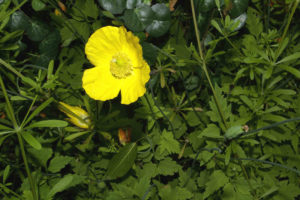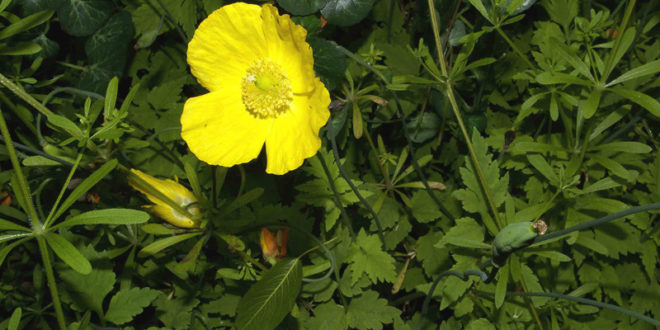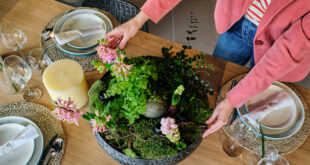It’s difficult to think of a flower that isn’t beautiful – yet there are plenty we’d be better off not inviting into our gardens. The problem is, some of these invasive plants look so much like their desirable cousins, we’ve planted them before we realise. Let’s take a peek at four look-a-likes we should never say ‘yes’ to!

The Welsh poppy
This pretty, delicate perennial poppy (Meconopsis cambrica) comes in shades of deep orange to pale yellow and is one of the earliest flowers to put on a show in spring. See it in bloom, and you immediately want it. But be warned. This poppy is a prolific ‘spreader’ and sets up home in any nook or cranny, even invading cracks in the garden path. The Welsh poppy hails from Western Europe where it often covers wild hillsides. It is particularly happy to grow in New Zealand as it is as at home in dry areas as it is in cool, wet conditions.
So, you may ask, what’s not to love about it? The answer is that it is that it seeds far too readily and, once becoming established, is virtually impossible to eradicate. If you leave it too late to remove its seed heads and they become over-ripe, any attempt to snip them off results in the seed going everywhere. Try to pull it up, and its long, carrot-like tap root is sure to snap off, and grow again. This is a poppy to steer clear of. Plant a beautiful blue Meconopsis instead.
Yellow flag iris
Iris pseudacorus is such a problem plant that it has earned a place on our National Pest Plant Accord. As pretty as any of our more desirable irises, it sets up home in watery environments which is why many of us are fooled into inviting it to live around the edge of our garden ponds. Left to its own devices, however, it forms dense, floating mats of rhizomes which soon take over every other species. It also seed prolifically and is poisonous to both humans and animals. If you’re looking for an iris that enjoys watery conditions, try these more desirable iris family members instead: Iris sibirica, Higos, and Louisianas.
Alstroemeria
They’re one of our favourite flowers – and are such good-keepers in a vase that if we don’t have them in our gardens already, we often reach for them in the flower isles of the supermarket. They are also a truly hardy plant and even in temperatures of minus 10 degrees they will survive. But there are two alstroemerias that you really do not want in your garden.









Stephanie - 7 years ago
Is there a safe alstroemeria? Are the yellow ones okay?What about the Princess lilies at the garden centre?
I do love alstroemerias but I am not thinking in terms of something that will take over.